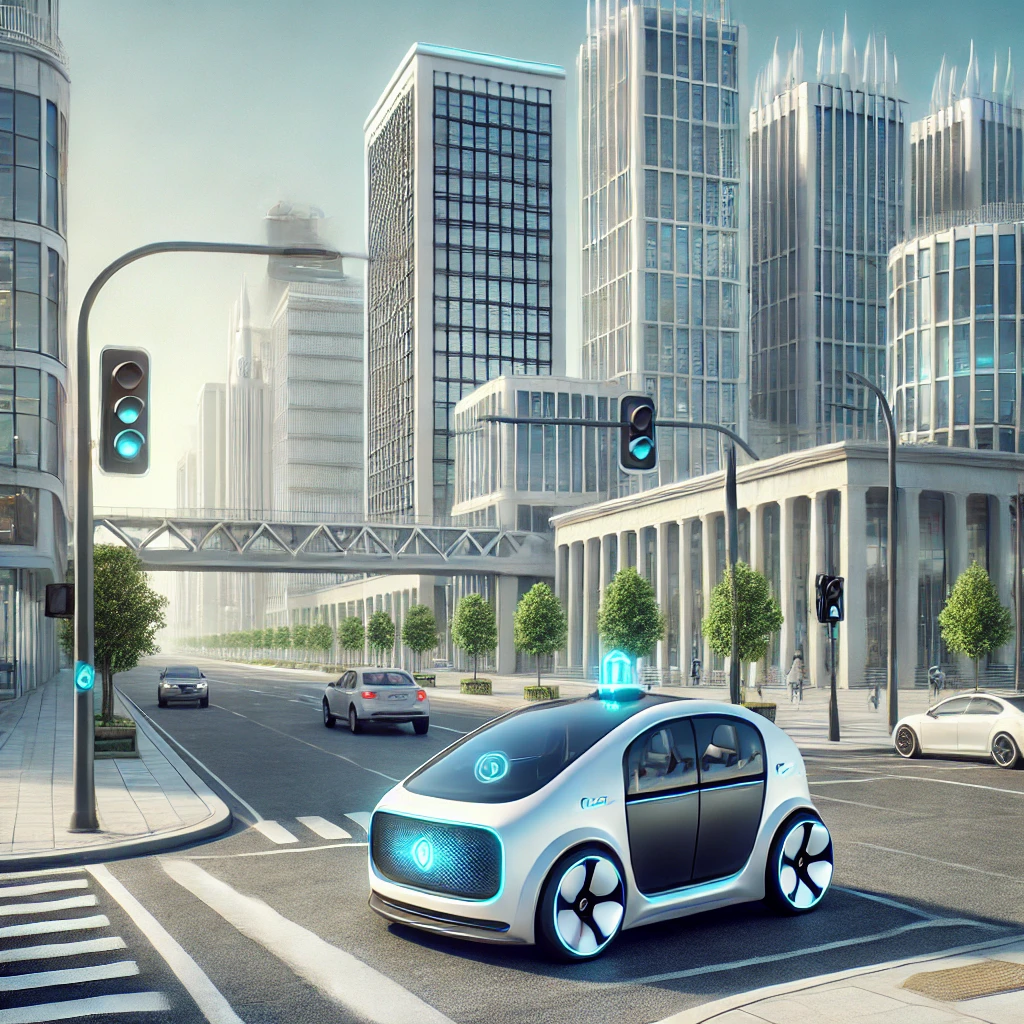In recent years, the evolution of self-driving technology has given rise to a new era in transportation — the robotaxi. These autonomous vehicles, designed to function without human intervention, are on the cusp of transforming urban mobility. As major tech companies and automakers race to perfect their autonomous driving systems, the robotaxi promises to be a game-changer, offering an efficient, safe, and sustainable alternative to traditional ride-hailing services.
What is a Robotaxi?
A robotaxi, or autonomous taxi, is a vehicle that can drive itself, using advanced technologies such as artificial intelligence (AI), machine learning (ML), LIDAR (light detection and ranging), and GPS systems to navigate through complex urban environments. These cars are equipped with a wide range of sensors, cameras, and radars that enable them to perceive and respond to their surroundings in real-time.
The concept behind robotaxis is simple: passengers use an app to request a ride, similar to how traditional ride-hailing services like Uber or Lyft operate, but with one key difference — there is no driver in the vehicle. This allows for a more cost-effective, scalable, and futuristic model of transportation.
The Technology Behind Robotaxis
At the core of every robotaxi is a self-driving system, often developed by a combination of automotive and tech companies. The system is built upon the following technological components:
- Sensors and LIDAR: These detect objects, pedestrians, and other vehicles around the robotaxi, creating a 3D map of its surroundings.
- Artificial Intelligence (AI): AI algorithms process data from sensors in real time to make decisions such as when to stop, accelerate, turn, or avoid obstacles.
- High-Definition Maps: Robotaxis rely on high-resolution maps, which allow them to pinpoint their location with precision and plan safe routes.
- Vehicle-to-Everything (V2X) Communication: Robotaxis can communicate with other vehicles, infrastructure, and even pedestrians, enhancing their situational awareness.
The Benefits of Robotaxis
The introduction of robotaxis offers a range of benefits that could reshape the future of urban transportation:
- Safety: One of the main advantages of robotaxis is their potential to reduce accidents caused by human error, which accounts for around 90% of road incidents. These autonomous vehicles are programmed to adhere strictly to traffic laws and can respond faster to sudden hazards.
- Cost-Efficiency: Without the need for human drivers, robotaxis can significantly lower operating costs. This could lead to reduced fares for passengers, making ride-hailing more affordable and accessible to a wider audience.
- Environmental Impact: Many robotaxi fleets are designed to be fully electric, reducing emissions and contributing to cleaner air in congested urban areas. The efficiency of autonomous systems could also reduce energy consumption by optimizing routes and reducing idling time.
- Increased Mobility: For individuals unable to drive, such as the elderly or people with disabilities, robotaxis provide newfound independence, allowing them to travel more freely.
- Traffic Efficiency: Robotaxis can communicate with one another and with traffic infrastructure, making better real-time decisions about speed, merging, and lane changes. This could reduce traffic jams, optimize traffic flow, and decrease overall commute times.
Challenges and Concerns
While the potential benefits of robotaxis are undeniable, there are several challenges that still need to be addressed before they can become a mainstream mode of transportation:
- Regulation and Policy: Governments around the world are still figuring out how to regulate autonomous vehicles. Safety standards, liability concerns, and insurance frameworks are being developed but are not yet fully established.
- Safety Concerns: Although self-driving technology has made impressive advancements, there is still the possibility of system failures or edge cases that the technology cannot handle. Ensuring that these vehicles are safe in all conditions, including bad weather and heavy traffic, is crucial.
- Public Acceptance: Convincing people to trust autonomous vehicles is a challenge. Many individuals still feel uneasy about riding in a car with no human driver, despite the safety features built into the system.
- Infrastructure: Cities will need to upgrade their infrastructure to accommodate robotaxis. This includes dedicated lanes, charging stations for electric robotaxis, and improved digital infrastructure for V2X communication.
Companies Leading the Robotaxi Revolution
Several companies are at the forefront of the robotaxi industry, each working to develop and deploy their own fleets:
- Waymo: Google’s autonomous driving division, Waymo, is one of the pioneers in this space. The company has already launched limited robotaxi services in Phoenix, Arizona.
- Tesla: Elon Musk’s Tesla is also working on a robotaxi fleet, with a vision of achieving full self-driving capability across its vehicles.
- Cruise: Backed by General Motors, Cruise has been testing its autonomous taxis in cities like San Francisco and has plans for large-scale deployments.
- Baidu: Often referred to as the “Google of China,” Baidu is actively developing robotaxis through its Apollo platform and has begun pilot operations in various Chinese cities.
Think about it and take into account that these vehicles will be available and in production 24/7, drastically lowering the prices per distance unit! The companies involved are all very serious about autonomous vehicles and delivering them to the market. Some of the models are already in production and are transporting real passengers. The financial and economic interests are huge! For me personally a sign that we are moving rapidly towards agi-whats-the-price-for-the-first-one-to-reach-artificial-general-intelligence/”>AGI. Indeed it’s an exiting time to be alive!
The Future of Robotaxis
As the technology matures and regulatory frameworks solidify, robotaxis have the potential to become a central part of urban transportation systems worldwide. In the coming decade, we may see the widespread adoption of these vehicles, reducing traffic accidents, lowering transportation costs, and improving air quality.
Moreover, the integration of robotaxis into smart cities could redefine urban planning, with less need for parking spaces and more room for green spaces and pedestrian-friendly areas. The future of urban mobility is bright, and robotaxis are poised to play a significant role in shaping that future.
Conclusion
The emergence of robotaxis is not just a technological leap; it’s a reimagining of how we move through cities. With their potential to improve safety, reduce costs, and minimize environmental impact, robotaxis could revolutionize the way we think about transportation. As we continue to advance in AI and autonomous driving technologies, the day when robotaxis are a common sight on city streets may be closer than we think.
?
“I, Evert-Jan Wagenaar, resident of the Philippines, have a warm heart for the country. The same applies to Artificial Intelligence (AI). I have extensive knowledge and the necessary skills to make the combination a great success. I offer myself as an external advisor to the government of the Philippines. Please contact me using the Contact form or email me directly at evert.wagenaar@gmail.com!”
[SEO optimized]


Pingback: Using the Llama 3 API on Groq.com: A Guide - evertslabs.org
Pingback: How AI Models Collaborate: Unlocking Synergy in Real-World Applications - evertslabs.org
Pingback: Autonomous AI Agents - evertslabs.org
Pingback: About Open Source LLM’s - evertslabs.org
Pingback: ImageNet: Revolutionizing AI through Visual Recognition - evertslabs.org
Pingback: AI in Philippine Defense: Enhancing National Security Through Technology - evertslabs.org
Pingback: latest trends in AI: - evertslabs.org
Pingback: AI Alignment: OpenAI’s Commitment and Why It Matters - evertslabs.org